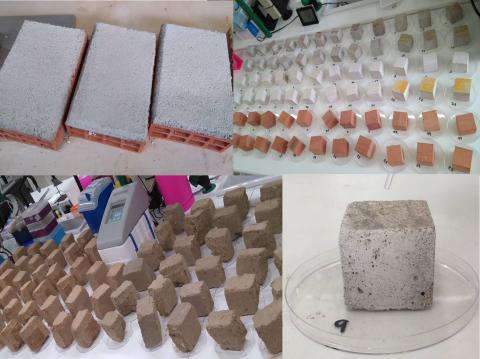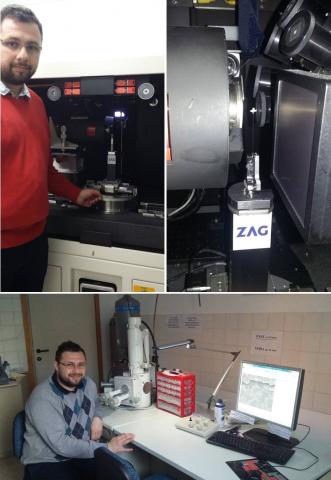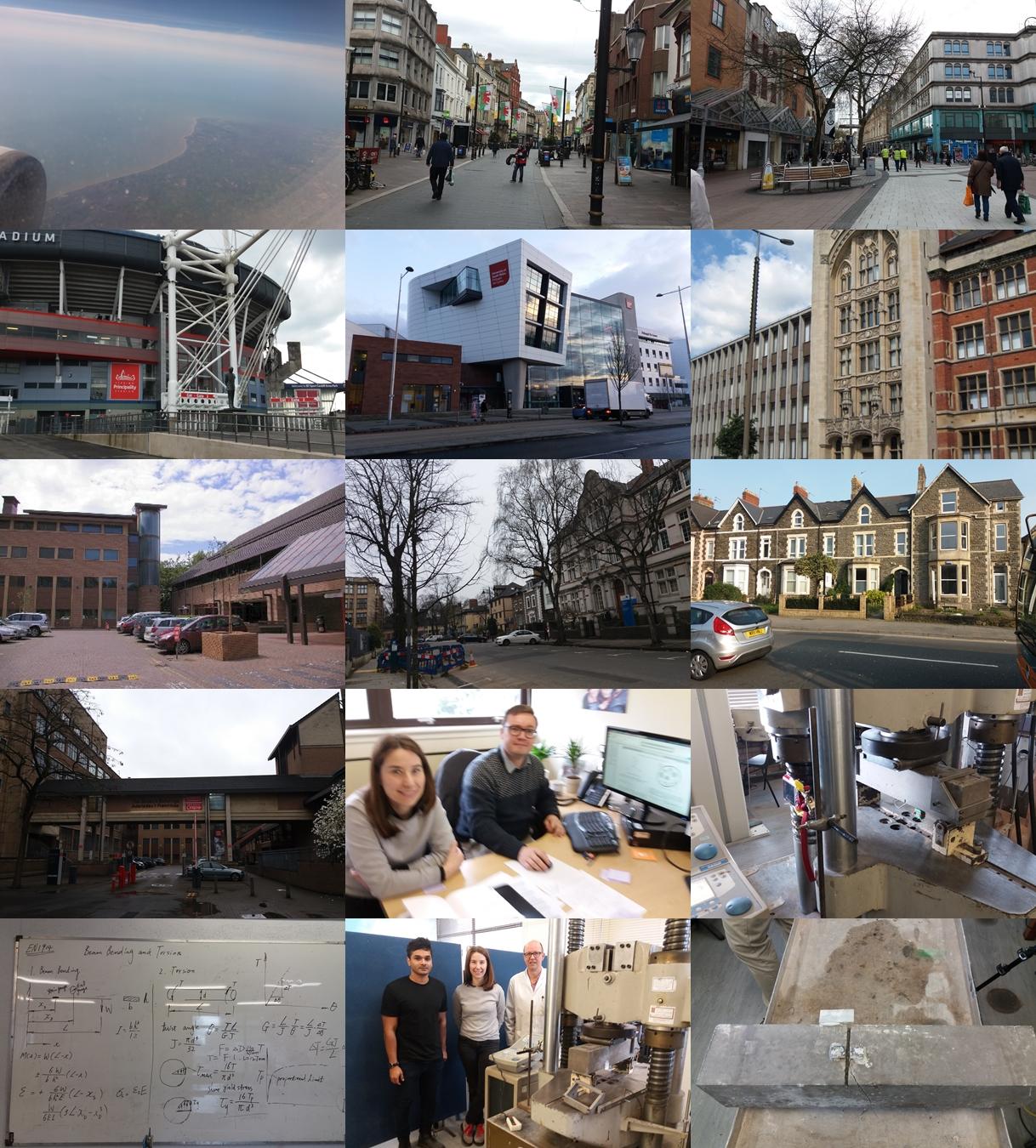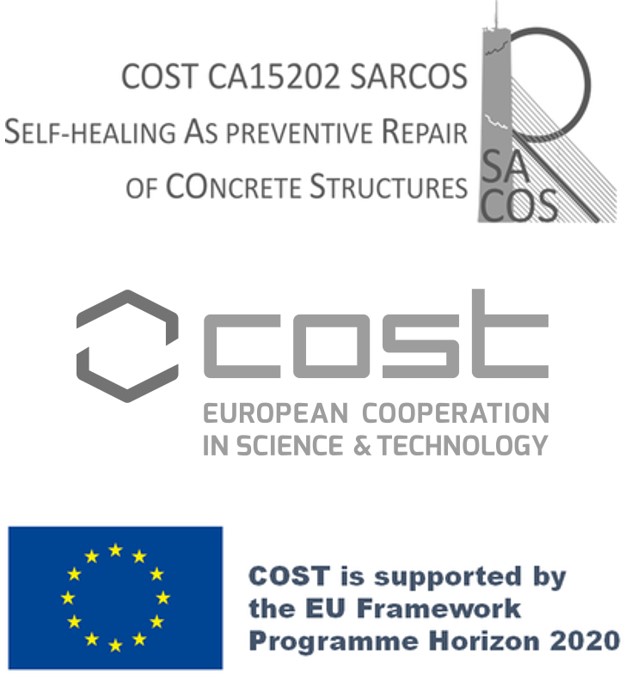Awarded STSMs
| CALL 2.0
Applicant: Dr Julia García-Gónzález, University of Leon, Spain
STSM Topic: Self-healing as preventive repair of concrete structures
Host: Maria Paulina S. F. Faria Rodrigues , Faculty of Sciences and Technology of NOVA University of Lisbon (FCT UNL), Lisbon (PT)
Period: 01/03/2017 to 31/03/2017
Work Plan Summary:
The applicant will work in bio-iron-based treatments and carbon-based exopolymer treatments on clay-based and cementbased
materials, learning the technique methodology. The applicant will test the characteristics of biotreated material related to
durability improvement and color change, comparing with untreated material: interpretation of the measurement results,
discussion with previous studies, writing technical reports, planning new material applications and new collaborations between
the host and my home institution.

Applicant: Dr Bojan Miljevic, University of Novi Sad, Serbia
STSM Topic: Computed tomography study of the cracks morphology and bacterial propagation in concrete structures
Host: Andrijana Sever Škapin, ZAG, Slovenian national building and civil engineering institute, Ljubljana (SI)
Period: 20/03/2017 to 31/03/2017
Work Plan Summary:
Within the scope of the WG1 of the “SARCOS” COST action, the group of Prof. Ranogajec at University of Novi Sad is aiming
to establish a new bacteria-based “healing promoter additive” technology. A preliminary work has been already done on the
bacterial approach for desalination of cultural heritage objects and the applied method in a case study has been approved by
chemical analysis (ion chromatography). Based on this experience, it would be of a great importance to receive the information
about the limit of the bacterial propagation inside the porous material such as a cement-based concrete. Therefore, the aim of
this STSM proposal is to establish an intermediate evaluation method for study of the first stage prerequisite success of the
external healing-based repair method by use of the computed tomography (CT), scanning electron (SEM) and confocal
fluorescent microscopy as characterization techniques. By this, the cross fertilization among different working groups (WG1
and WG2) will be assured. Secondly, another objective of the proposed STSM is to use the opportunity of gaining knowledge
about the challenges in production of bio-polymers.
A detailed working plan of the applicant in the proposed short term scientific mission consists of planning, performing and
evaluating of experiments by several characterization techniques: 3D computed tomography, scanning electron microscopy
and multi-focal optical microscopy, available at the host institution. The detailed study of cracks and bacterial propagation in
them will be done by comparison of the results obtained by three different complementary imaging techniques (using of X-rays,
electrons and visible light). The second part of the work to be carried out by the applicant at the host institution is related to the practice performing the preparation of the raw material procedures and the production of polymers inspecting of the key points in the production technology, important for developing of the sustainable bacterial bio-polymer. The proposed STSM will enable an establishing of the evaluation method and strongly support the development of the external bacteria-based repair healing method as innovative solution.

Applicant: Cristina De Nardi, University IUAV of Venice
STSM Topic: Study of innovative materials for structural restoration of historical buildings.
Host: Tony Jefferson, Cardiff University, Cardiff (UK)
Period: 26/03/2017 to 1/04/2017
Work Plan Summary:
The work to be carried at the host institution regards the modelling of two distinct self-healing phenomena/processes. The first of these is a system to investigate the autogenous healing at the material level. Experimental results, already performed on cube specimens of lime-based mortars - by means of uniaxial compressive tests, have clearly demonstrated the influence of age and level of damage on the healing capacity. The study showed that the specimens exhibit a primary and secondary healing response during the first and second loading stages respectively, with the latter response providing an increase in peak load and a full recovery of strength.
The second system is proposed to investigate the influence of healing capacity of lime-based mortars in masonry specimens, by means of shear bond test. Experimental results, performed on of masonry triplets consisting of three clay bricks and two layers of 10 mm thick mortar, showed that the healing capacity has determined a relevant gain in both friction angle and the cohesion parameters, achieving a final performance higher than reference undamaged specimens. According to the host institution, a numerical procedure will be developed, with the aim to predict the capacity and the response of the material. The results, obtained from this first step of the numerical model, would be a numerical tool for simulating the material system in a FE model. The calibration of FE model could be able to model the behaviour of a masonry wall and then, by including self-healing constitutive low, to model the contribution of this aforementioned capacity on the overall mechanical bearing. A good conclusion from the work would be the good consistency of the numerical results with the experimental data.



